SUMMARY
Today we focused on rhythm! this included a history video and some cool drummer sites. Because this lesson was asynchronous we marched to the beat of our own drum. With some technical issues of course.
CLASSROOM

Watch How Rhythm Works (47 minutes)
Rhythm is addictive but complex. The first rhythm we heard was our mother’s heartbeat in the womb. The tempo of the pulse depends on feelings, speed, and movement. pulse is important in every piece of music (even when you can’t hear it like in classical music). An impenitent plus (not heard) benefit is a serenity and relaxation feeling. Composers for classical music take advantage of the tempo in our heads. Rhythm has a choice of pulse and speed. walking has a basic feel of the beat. normally when you walk you subdivide each step or beat by two. Triple tone patterns (rhythms like waltzes) are more famous than double tone patterns. Minims( two long beats)crochet (half of the minims) quavers (half of the crochet) semiquavers (half of the quavers). The accent is all about which beats are important and which are not. this means that there is a strong and a weak beat, like a runner who steps stronger on one foot then the other. This creates a grove. virtual accents are accents that are imaginary and were created by our brains. syncopation is when rhythm gets “funky”. This was used a lot during the twentys. Syncopation is when you shift slightly ahead or behind the beat. it makes It more fun and human. syncopation really became famous in rag music. swing music is the rhythm lagging. the lead line would be left behind from the main beat like its loosening itself or being cheeky.
LAB


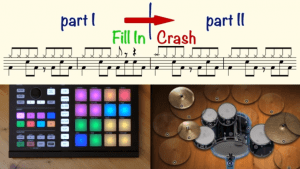
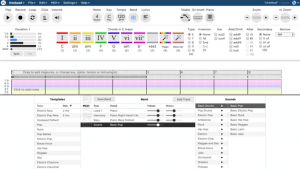
Advanced Drum Arrangements in Hookpad.
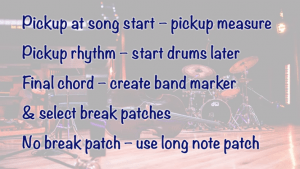
This was really helpful, I’ve never been good at making beats but this made it easier.
PRACTICE ROOM
Mike Palmisano show you how to play guitar like a drummer.

Instead of practicing the guitar, I worked on writing a good beat in my garage band. I always underestimate how hard writing a drum line really is. It needs to work well with the rest of the song, not just sound good on its own. I usually write everything else before writing a drum line, and I think I make it harder for myself when I do that. after working in it though, I think I have a good starting point.
A Side Note
- Funky Drummer– Clyde Stubblefield
- This drummer pattern is THE basis of hiphop!
- Resampled so, so, so many times!
- EXAMPLES
- RUN DMC – Run’s House
- Public Enemy – Rebel Without a Pause
- Sinéad O’connor – I am Stretched on your Grave
- Emeli Sande – Heaven – Heaven
- George Michael – Freedom!
OUTSIDE / JOURNAL / IDEAS
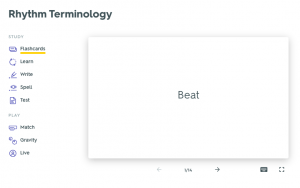
Flip through the Quizlet on Rhythm Terminology flashcardsa couple times.
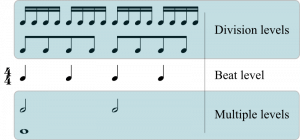
When I walked around the room, I counted my steps in 4/4 time. One, two, three, four. after getting a steady march, I tried to subdivide my steps in the same time as I walked before. That wasn’t to hard , but what I found was that it was actually harder to get off beat then on it. It made me wonder if footsteps could ever be out of time. Of course if you trip up or something they would, but could you be off tempo by just walking. If feet moves at the same rate of each other then I assume that it would be nearly impossible to have one foot out of sync unless there’s a injury or something.
STUDIO


Funklet is back! This time in the studio. Pick a drummer, like Clyde Stubblefield. Play around with their a beat with Funklet’s editing options. Play a rhythmic guitar strumming pattern over the beat. Practice playing in time with the beat. Try muting the strings and keeping tempo, chucka-chucka style. Watch this chucka-chucka tutorial, to better understand the technique.
CONTROL ROOM
Funklet is back, AGAIN! This time in the control room.
Pick a drummer.

Export the MIDI file.
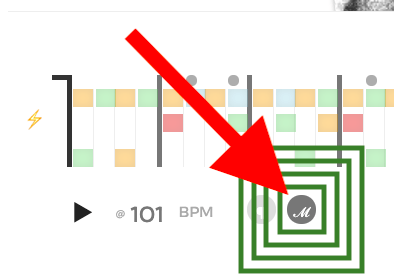

Import it into Soundtrap.
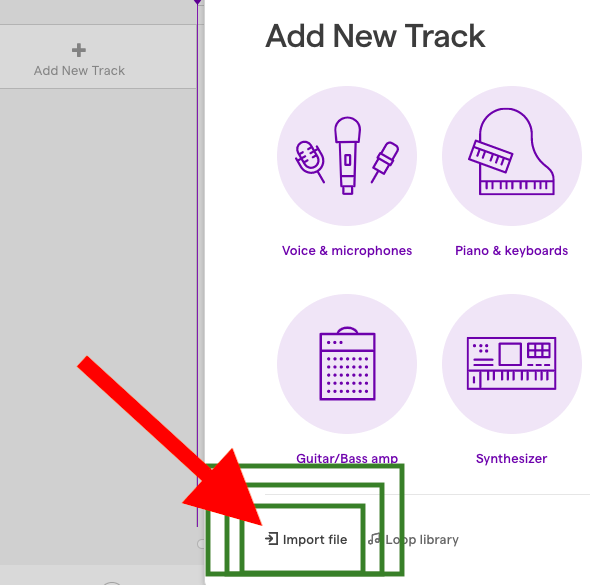
Record a rhythmic guitar strumming pattern over the beat.
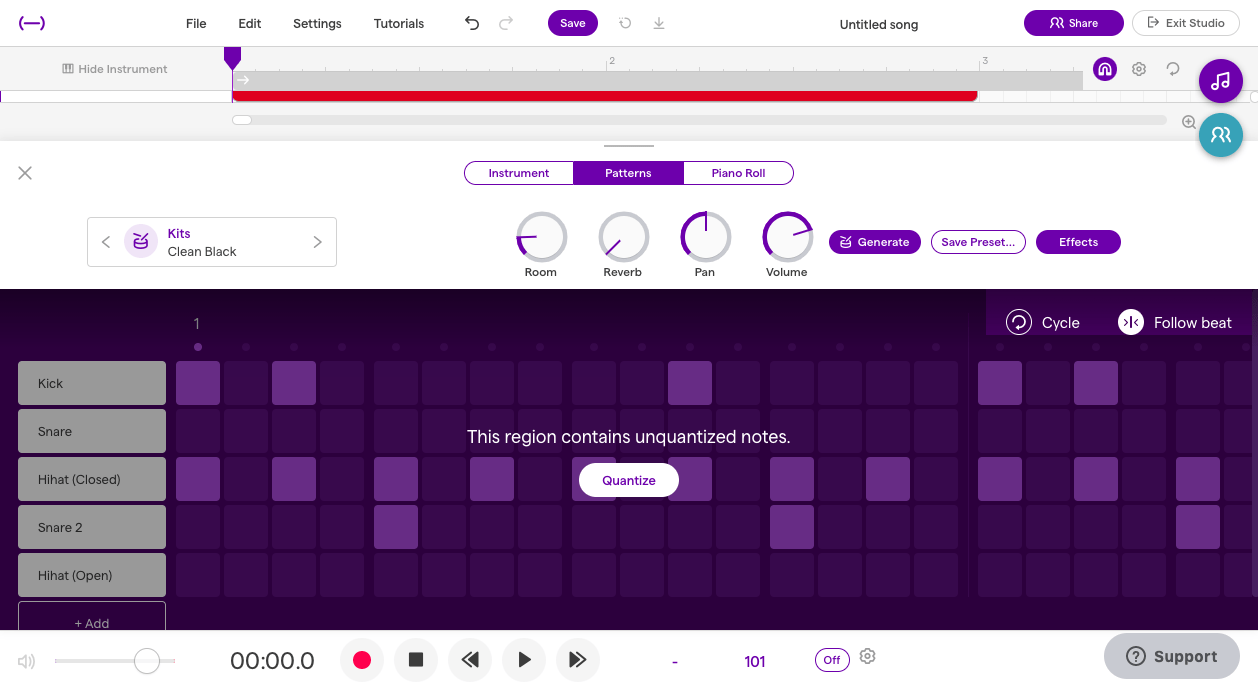
Watch Mr. Le Duc’s Tutorial for Exporting and Importing MIDI Files with Funklet, HookLab, and Soundtrap, if you get stuck with any of these steps.
WHAT I LEARNED and PROBLEMS I SOLVED
This morning (Actually last night) I wasn’t able to find the email with the zoom meeting. I might’ve not been looking hard enough or something but I solved the problem quickly with a email to my instructor. The second problem was only having my school computer to work on. Some sites were blocked sense my computer comes from a different district then the class. to solve that problem, I used my phone for the videos and websites that didn’t work. Overall today’s “problems” were miniscule and easily fixed.